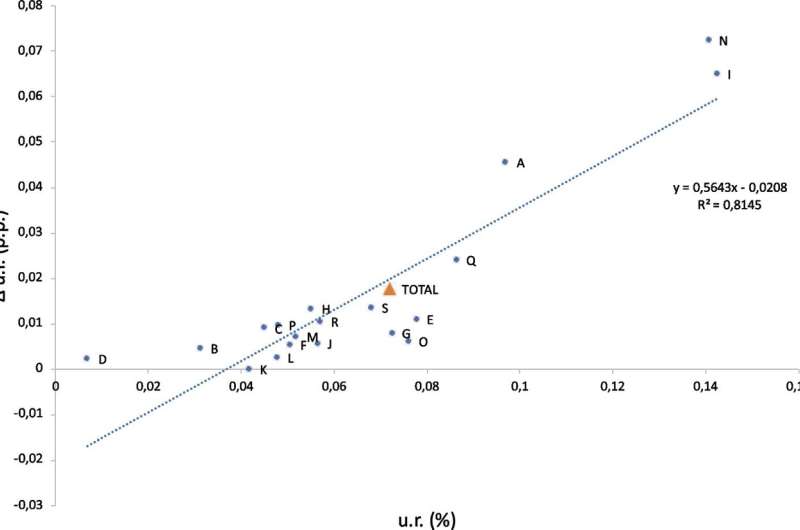This article has been reviewed according to Science X's editorial process and policies. Editors have highlighted the following attributes while ensuring the content's credibility:
fact-checked
trusted source
proofread
Understanding the impacts of migration on the Austrian economy

How would Austria be affected if a quarter million people entered the country right now? A new study conducted by IIASA and the Joint Research Center (JRC) projects the potential impacts of increased migration on the Austrian labor market and the economy.
Austria, as well as many other European economies, has repeatedly experienced large waves of migration. In the context of increasing globalization, climate change, and geopolitical instabilities, it is necessary to strengthen our ability to predict and prepare for sudden fluctuations in migration flows and their impacts on the labor market and the economy in general.
The new study published by IIASA and JRC scientists in Comparative Migration Studies focuses on projecting and analyzing the short- to mid-term effects of a hypothetical yet plausible migration scenario.
The authors adopted a detailed macroeconomic approach to simulate the effects of increased migration on the economy of the host country—in this case Austria—to evaluate the resilience of the country's economy.
They created a macroeconomic agent-based model (ABM), which takes into account the heterogeneous characteristics of the population and simulates the effects of migration on more than a thousand cohorts differentiated by sex, citizenship, activity status (e.g., retired, unemployed, employed), and sector of occupation.
The overall results of the analysis corroborate previous studies that have shown a positive impact of migration on economic growth accompanied by a reduction of the GDP per capita. The innovation of this analysis is to show that the effect of migration on unemployment can vary significantly across different cohorts.
In terms of policy implications, the study shows that labor market regulations should consider the heterogeneous impacts of migration on different population groups and industries. For instance, migration shocks can lead to an increase in unemployment among refugees in certain industries, such as agriculture or health care. This can be caused by a lack of qualification recognition, which often drives highly qualified migrants into these sectors resulting in unemployment.
The study also concludes that a data-rich and large-scale macroeconomic ABM can provide detailed information on the economic impacts of a sizable migration shock and, thus, on the resilience of an economy, which can be helpful for policymakers seeking to anticipate the magnitude and expected consequences of immigration influxes.
More information: Sebastian Poledna et al, Economic and labour market impacts of migration in Austria: an agent-based modelling approach, Comparative Migration Studies (2024). DOI: 10.1186/s40878-024-00374-3





















